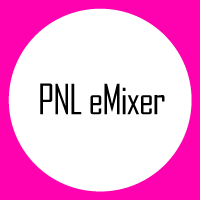Torrey Trust, University of California, Santa Barbara
PLN eCourse: Building a Community of Connected Educators
For too many years, educating our youth has been the sole responsibility of teachers who work in isolated silos. Yet, Salomon’s (1993) and Hutchins’ (1995) Distributed Cognition theory posits that no one individual can hold all of the knowledge of a community. Instead, knowledge is shared among all of the members of the community. At a time when teachers are facing more demands and challenges, opportunities for teachers to connect with and learn from other educators, have diminished.
To meet this need, I designed an online course to support teachers through the process of building a Professional Learning Network (PLN) and becoming a connected educator. A PLN is a collection of social media and web 2.0 tools that facilitate the discovery of new information about a domain of interest. In the interactive online course, the participants learn to use various PLN tools and engage in discussions about key issues related to participation in PLNs (i.e., ethics, networking, information literacy, privacy).
The course aligns well with the connected learning principles. Teachers create their own interest-driven learning pathways, which are supported by the peers in their networks. They build a PLN and then use their PLN tools to produce shared artifacts for teaching. The teachers also connect, communicate, and collaborate with educators on a global scale. I created the online course using the Wikispaces platform because of its accessibility, openness to the general public, and ease-of-use. The e-course has been visited over 3,000 times by teachers from all around the world.
The PLN e-Course was designed for a global audience. Anyone can participate in the site from practically any type of device with Internet. The course is significantly different from a typical MOOC or college course. The course participants, which are mostly K-12 teachers, learn through active participation in digital tasks and discussion topics. Teachers participate in various tasks (e.g., sharing a resource with a Diigo group, replying to tweets, or joining an Edmodo subject community) in order to achieve their professional goals. Additionally, there are no lectures or multiple-choice quizzes and learning is not a linear process. The participants create their own learning pathways and they can use the learning modules menu to select the topics that pique their interests.
Because teachers are active participants in their own learning, this site has evolved over time to meet the teachers’ needs and interests. I actively seek informal feedback through surveys to improve the learning experience of the course participants.
I conducted a research study on this e-course and found that it increased teachers’ willingness to seek help and solicit new ideas using their PLN tools. I also found that each teacher developed a unique PLN based on her professional goals. Additionally, teachers used the PLN tools differently depending on their level of comfort with the tool and their local classroom needs.
For a future study, I would like to examine the practical implications of building a PLN and determine whether participation in a PLN leads to a change in teaching practice. I would also like to explore whether the e-course participants are more willing to create connected classrooms in which the students, teacher, teachers’ network, and the local community work together to improve learning.
Posted in Gallery |
